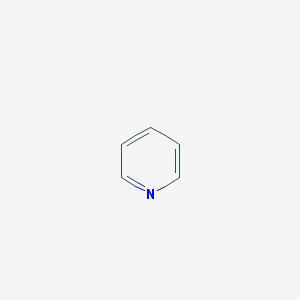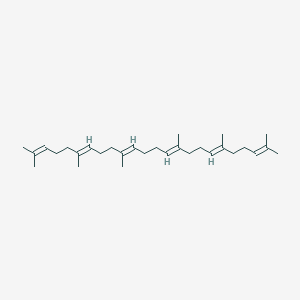-
Categories
-
Pharmaceutical Intermediates
-
Active Pharmaceutical Ingredients
-
Food Additives
- Industrial Coatings
- Agrochemicals
- Dyes and Pigments
- Surfactant
- Flavors and Fragrances
- Chemical Reagents
- Catalyst and Auxiliary
- Natural Products
- Inorganic Chemistry
-
Organic Chemistry
-
Biochemical Engineering
- Analytical Chemistry
- Cosmetic Ingredient
-
Pharmaceutical Intermediates
Promotion
ECHEMI Mall
Wholesale
Weekly Price
Exhibition
News
-
Trade Service
In a new study, researchers from Massachusetts General Hospital, New Jersey State University and Rush University Medical Center found that combining three advanced strategies for treating malignant melanoma ---promole-targeted therapy, immune checkpoint blocking, and the use of lysomavirus--- could significantly improve outcomes. The findings were published in the December 12, 2018 issue of the Journal of Translational Medicine under the title "MEK resedion enhances oncolytic virus immunotherapy through increased tumor cell and T cell" activation."We found that the combined use of T-VEC and a MEK inhibitor significantly enhanced the therapeutic response and the ability to kill tumor cells, and adding a PD-1 blocker to this treatment could further improve the treatment response," said Dr. Howard Kaufman, co-author of the
paper and professor of oncology surgery at Massachusetts General Hospital. All three drugs we use have been approved by the U.S. Food and Drug Administration (FDA), so our study provides a reason to use them together. Clinical trials to test these three drugs should be preferred. About
half of melanomas are caused by mutations in the BRAF gene, and drugs that inhibit another gene in the same pathway ---BRAF or MEK--- can significantly improve treatment outcomes in many patients. However, drug resistance often occurs, especially when several BRAF/MEK inhibitors are used in combination. Immuno checkpoint inhibitors that target molecules that prevent the immune system from attacking tumors, such as PD-1, also lead to significant improvements in treatment, but the use of immunosuppressants can have toxic side effects. Lyovirus is another way to directly infect and kill tumor cells and activate congenital and adaptive immune responses. The virus used in the new study, known as T-VEC, is the first and so far the only FDA-approved virus.
in the new study, Kaufman and his colleagues first looked at the potential of using braf inhibitors vemurafenib and T-VEC in human melanoma cell line and melanoma mouse models. Although this combined use led to increased lethality of the melanoma cell line in people with BRAF mutations, the researchers were surprised to find that the combined use of T-VEC and MEK inhibitors trametinib ---ingene used as a control--- promoted the death of human melanoma cell lines with BRAF mutations and human melanoma cell lines without BRAF mutations. They then validated these improved treatment results in mouse models of melanoma with normal immune function and identified several aspects of this internal mechanism, including dependence on cytotoxic CD8-plus T cells and a group of degenerative cells, as well as inflammatory responses characterized by increased expression of PD-1 and PD-L1.
results led the researchers to experiment with a combined use of T-VEC, quercinini and a PD-1 targeted monoantigen, which led to more effective tumor eradication in melanoma mouse models. Overall, although the single use of T-VEC or MEK inhibitor tramethione produced a therapeutic response in about 20% of mice, the combination of the two (i.e., a double combination) increased the therapeutic response rate to 50%, and the combined use of the three (i.e. triple combination) increased the therapeutic response rate to nearly 100%. They also tested this double combination and triple combination in a mouse model of colon cancer and observed similar results--- when T-VEC was used in combination with quercinine or anti-PD-1 drugs, survival in mice increased significantly, and the triple combination completely eradicated tumors in all treated mice.
"Although we still don't know the mechanism behind this effect ---e.g. enhancing the immune response to tumors that don't have BRAF mutations--- the interaction between T-VEC and qumentinib seems to be involved," Kaufman said. These data from animal models of colon cancer suggest that this combination therapy has the potential to be used to treat diseases such as melanoma. Today, we need to develop appropriate clinical trials to see if this approach benefits patients with melanoma and other types of cancer. (Bio Valley)







